Press the right key for the next slide (or swipe left)
also ...
Press the left key to go backwards (or swipe right)
Press n to toggle whether notes are shown (no equivalent if you don't have a keyboard)
Press m or double tap to see a menu of slides
Truth-functional Connectives
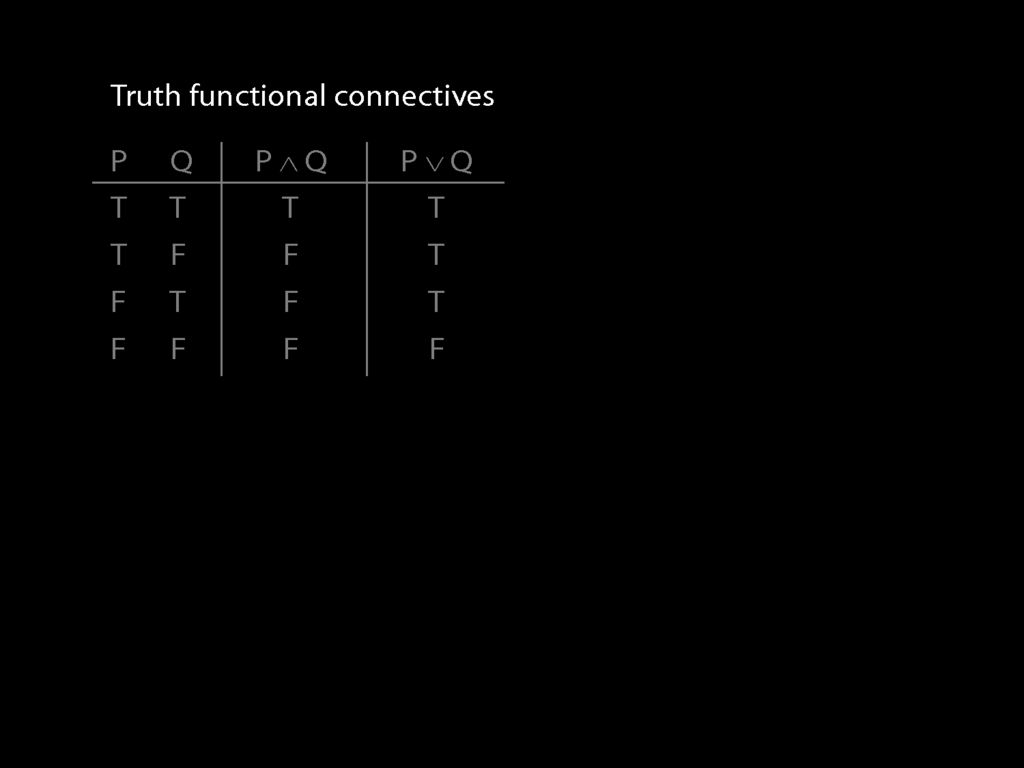
A \emph{connective} joins zero or more sentences to make a new sentence. Examples of connectives include: `∧', `¬', `$\bot$' and `because'.
A sentence joined by a connective is a \emph{constituent}. For example, consider the sentence ‘P because Q’: P is a constituent of this sentence.
A \emph{truth functional connective} produces a new sentence whose truth value depends only on the truth values of its constituent sentences.
When P and Q are both true, ‘P because Q’ is sometimes true and sometimes false. Therefore, ‘because’ is not a truth functional connective. To illustrate, consider `Alan got yellow cards because some apples are green' and `Alan got yellow cards because he used his elbows'. All the constituent sentences are true, but the first sentence is false whereas the second is true.
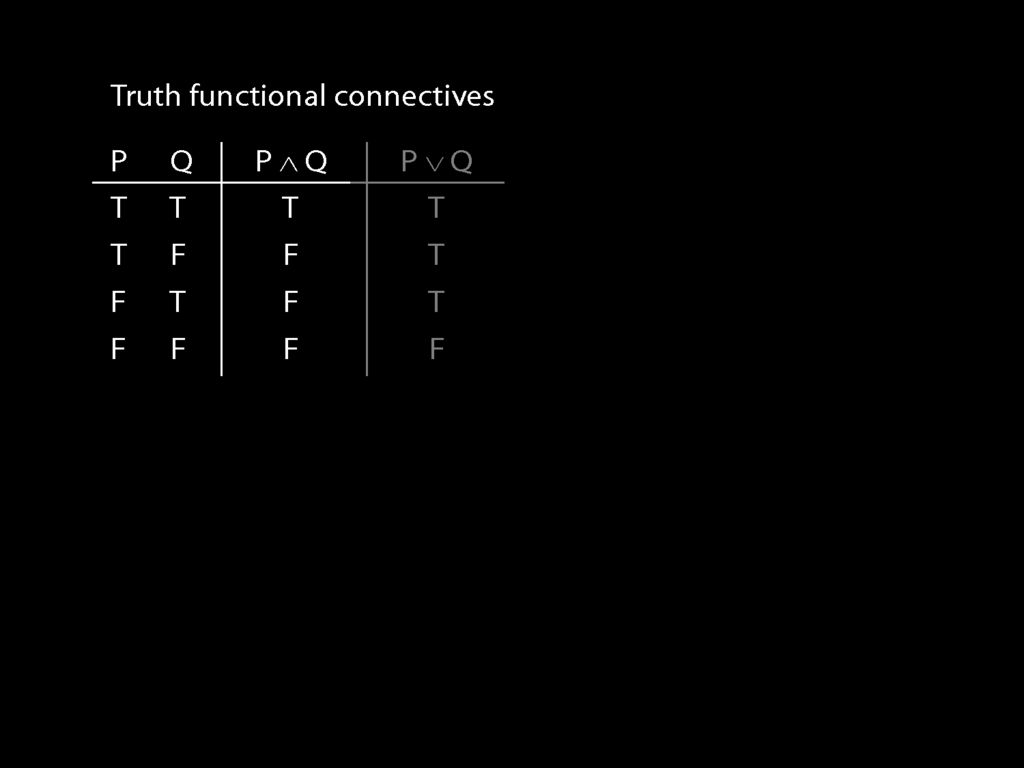
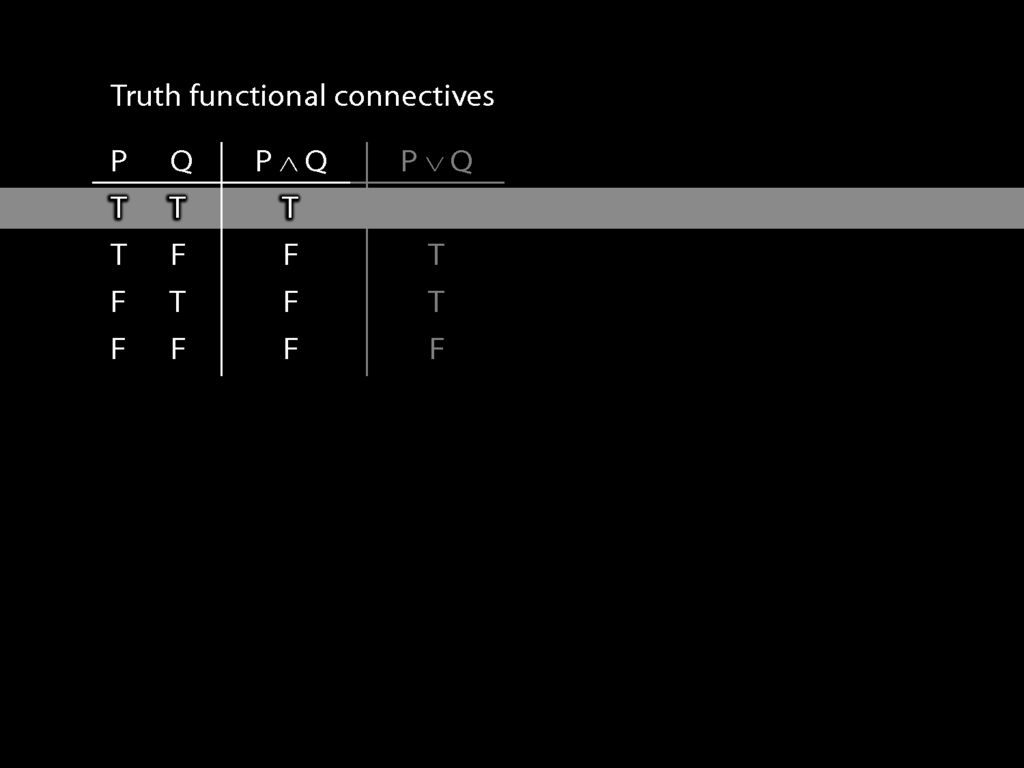
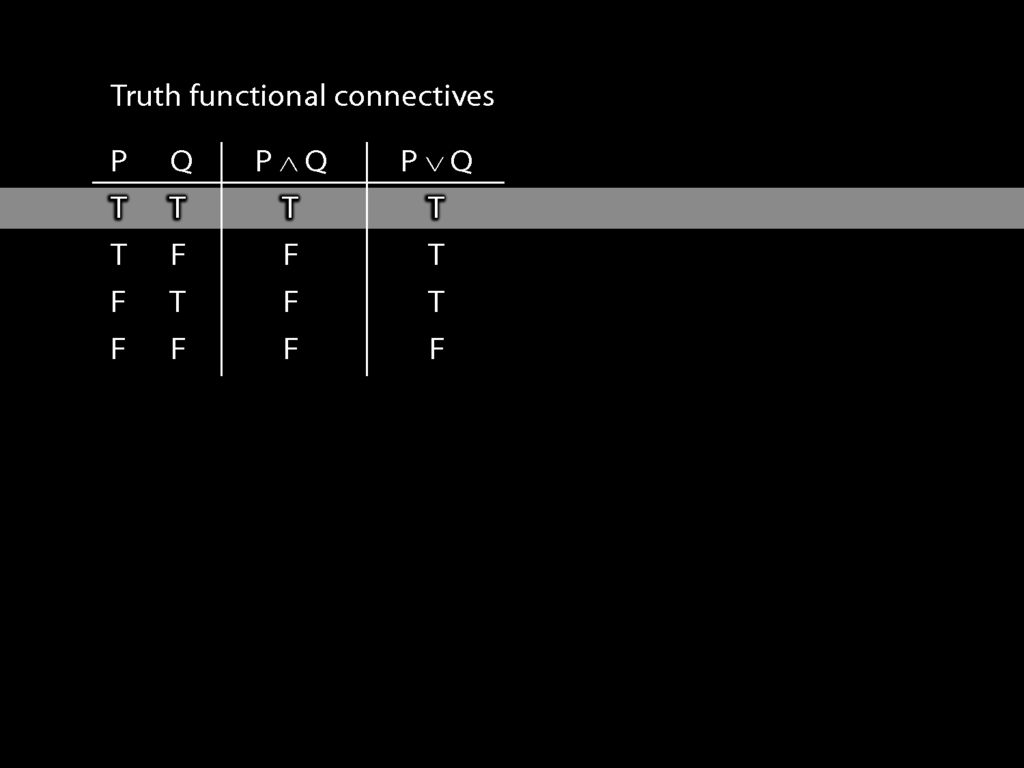
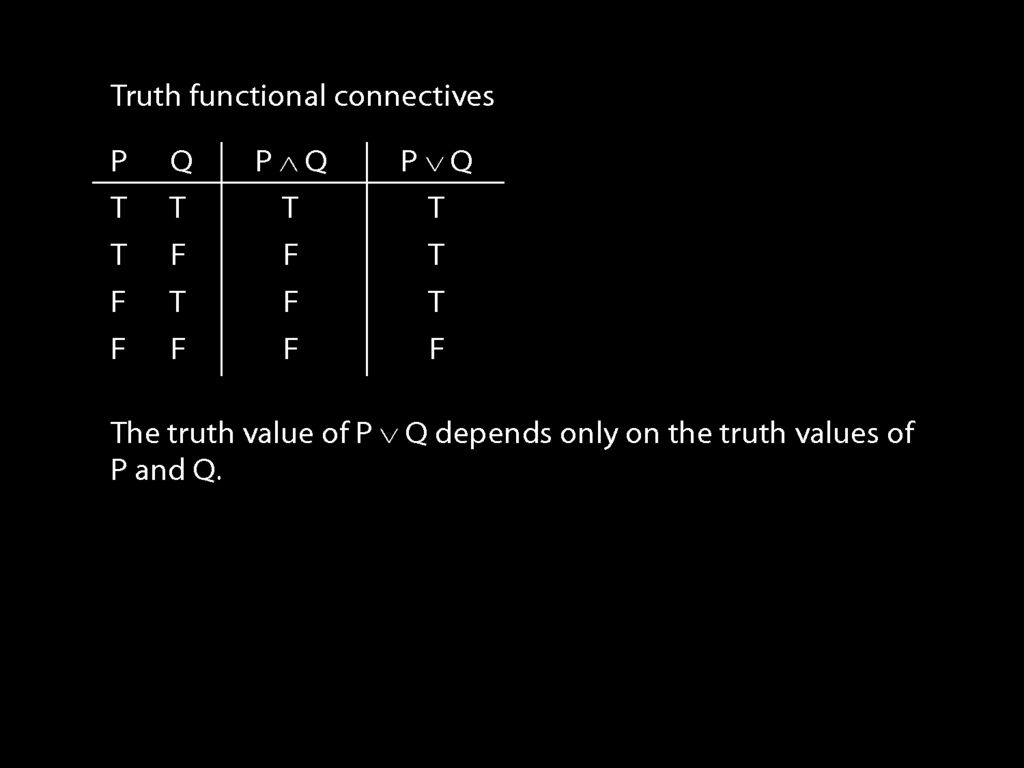
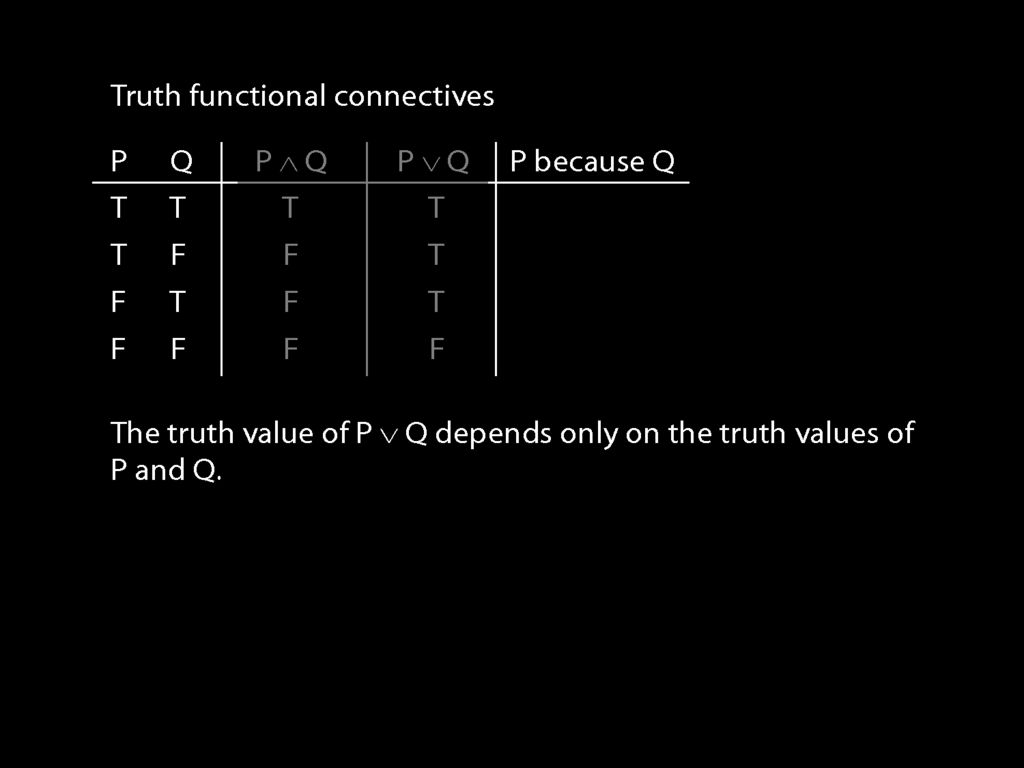
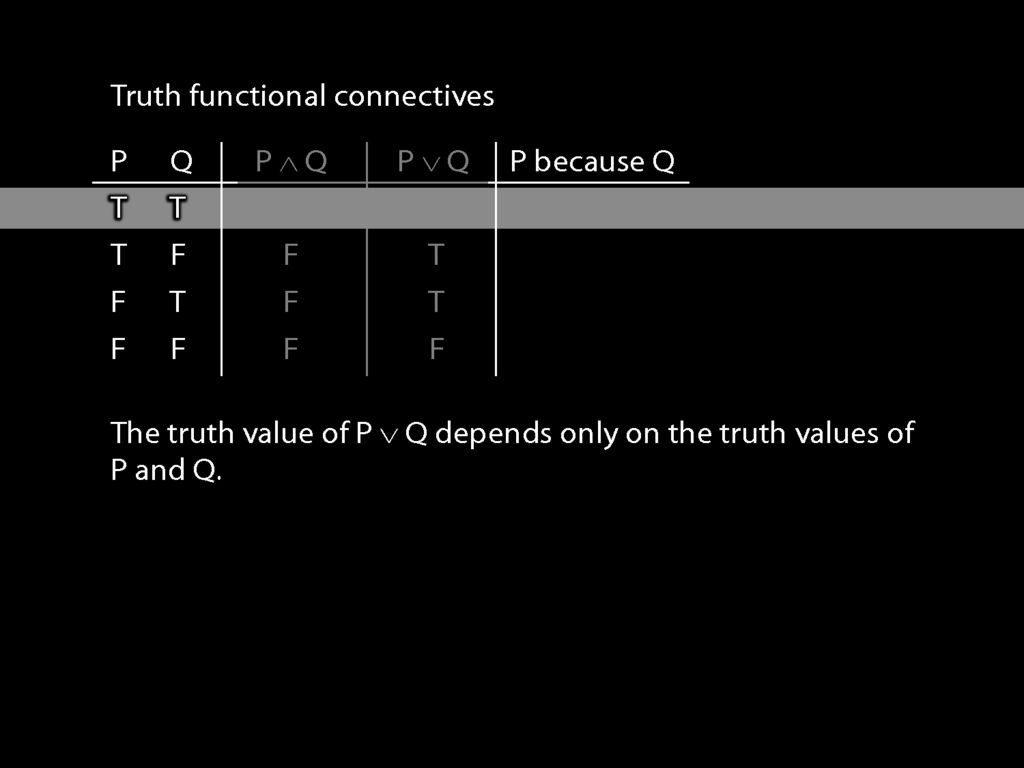
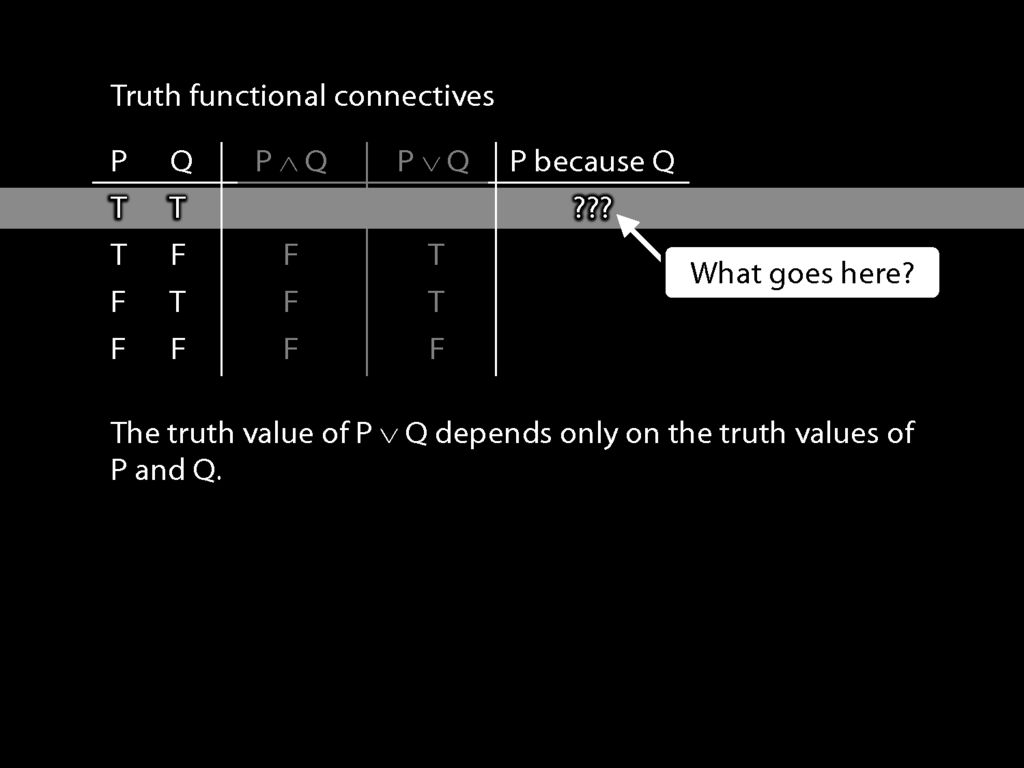
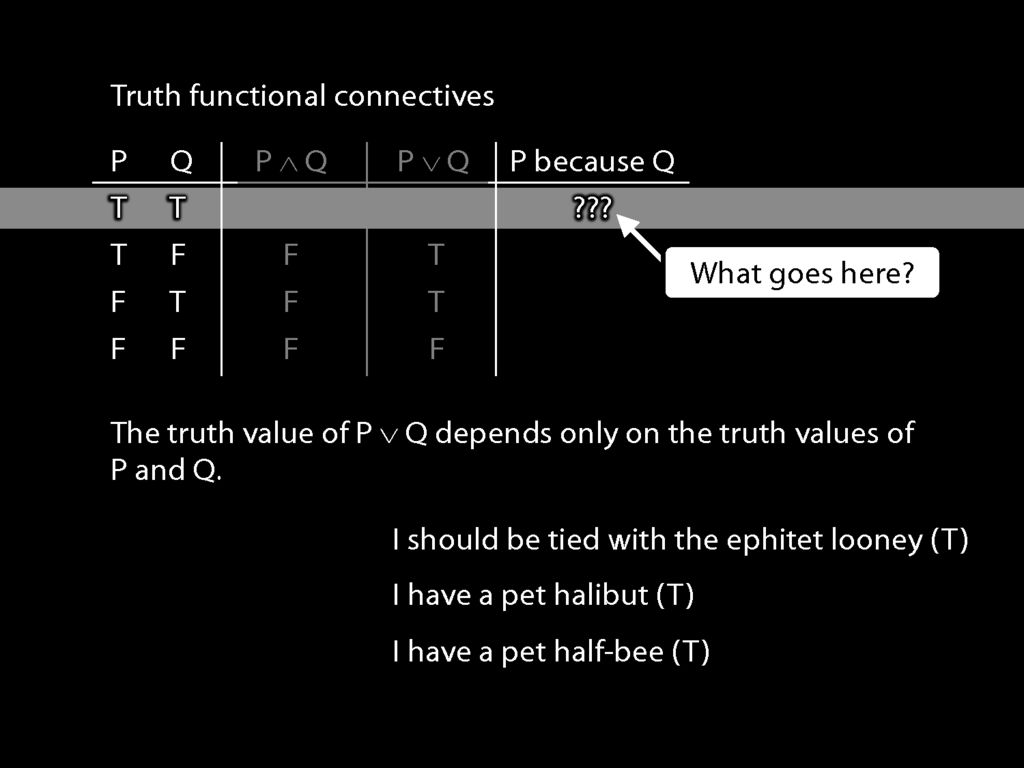
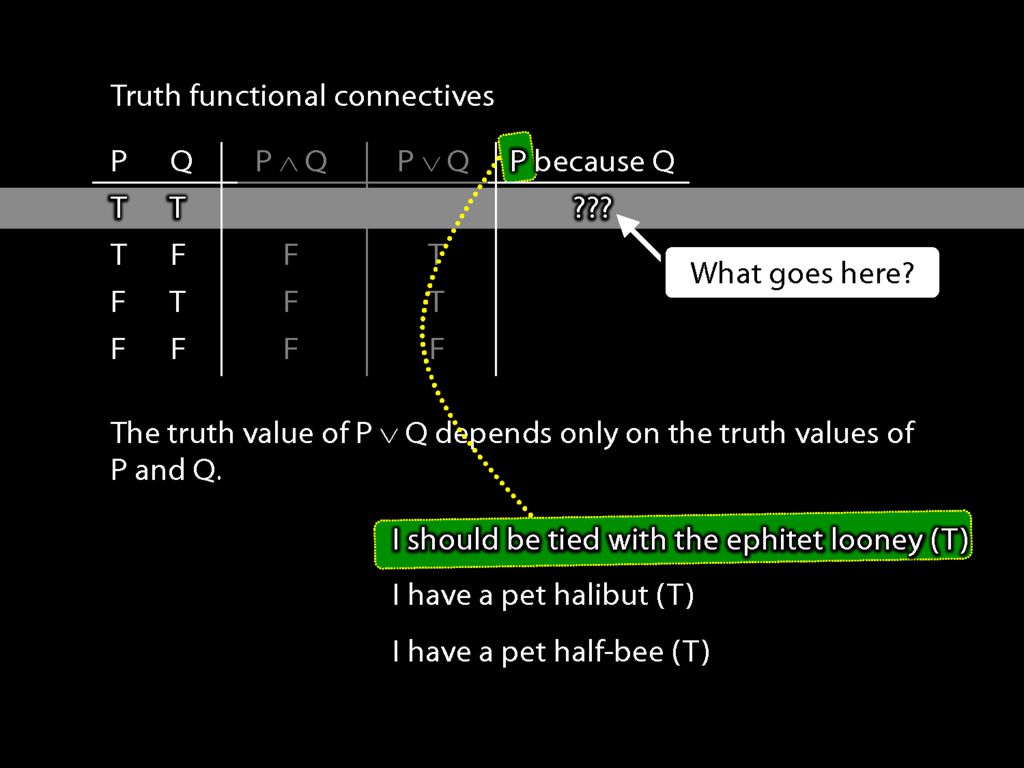
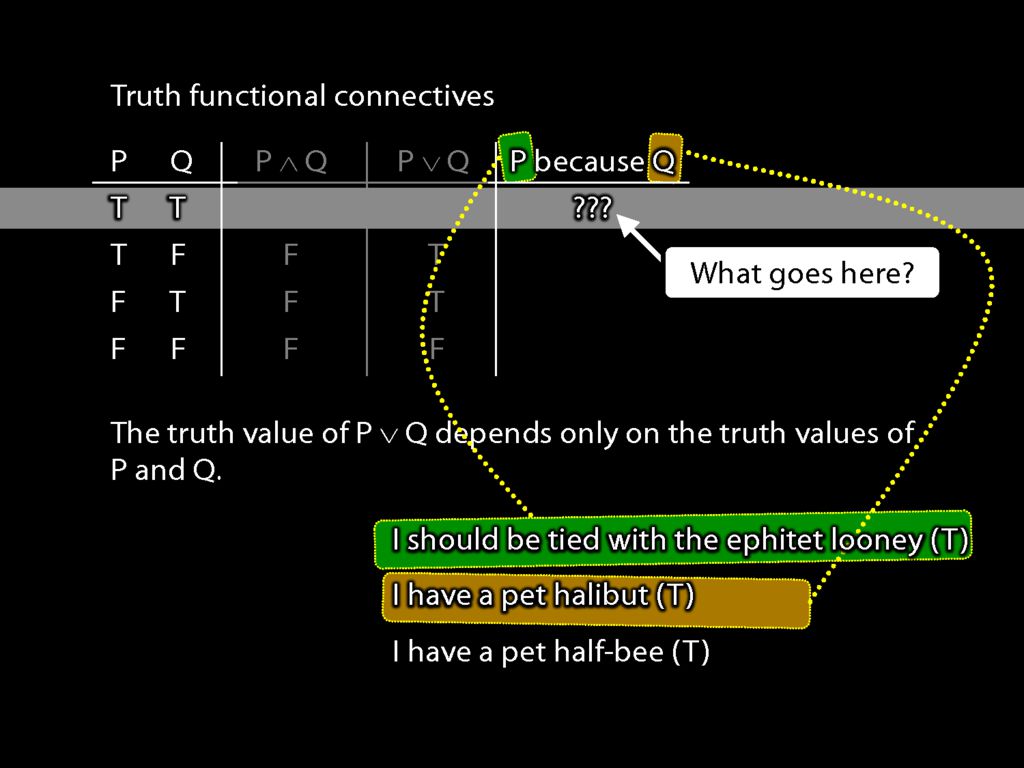
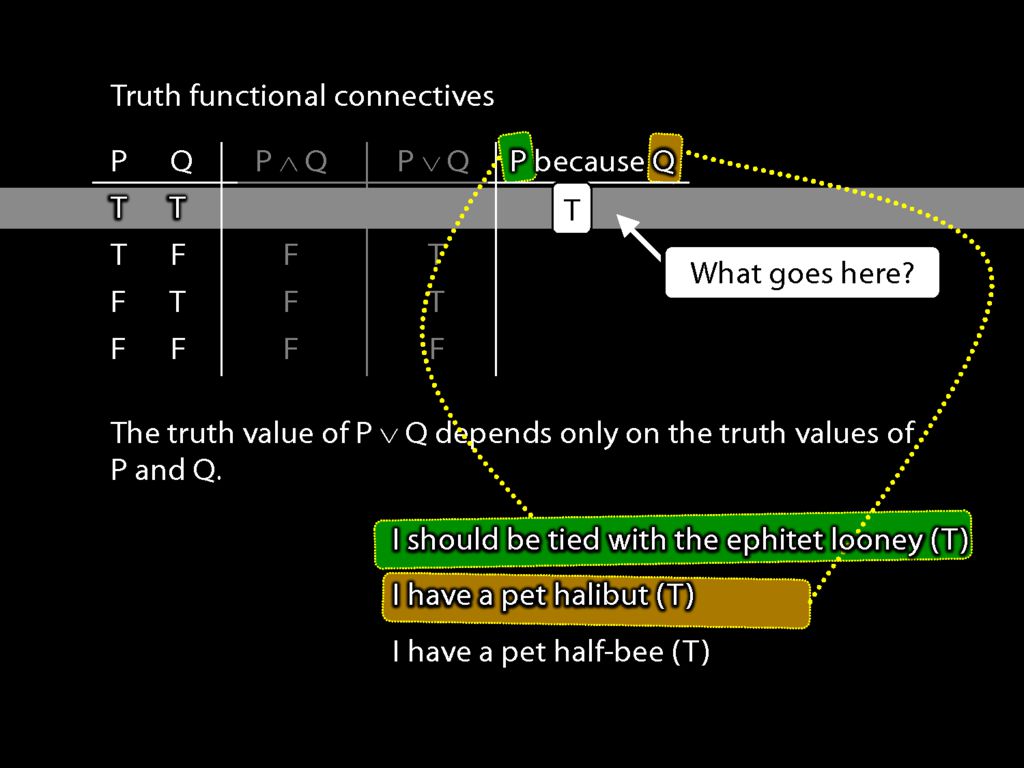
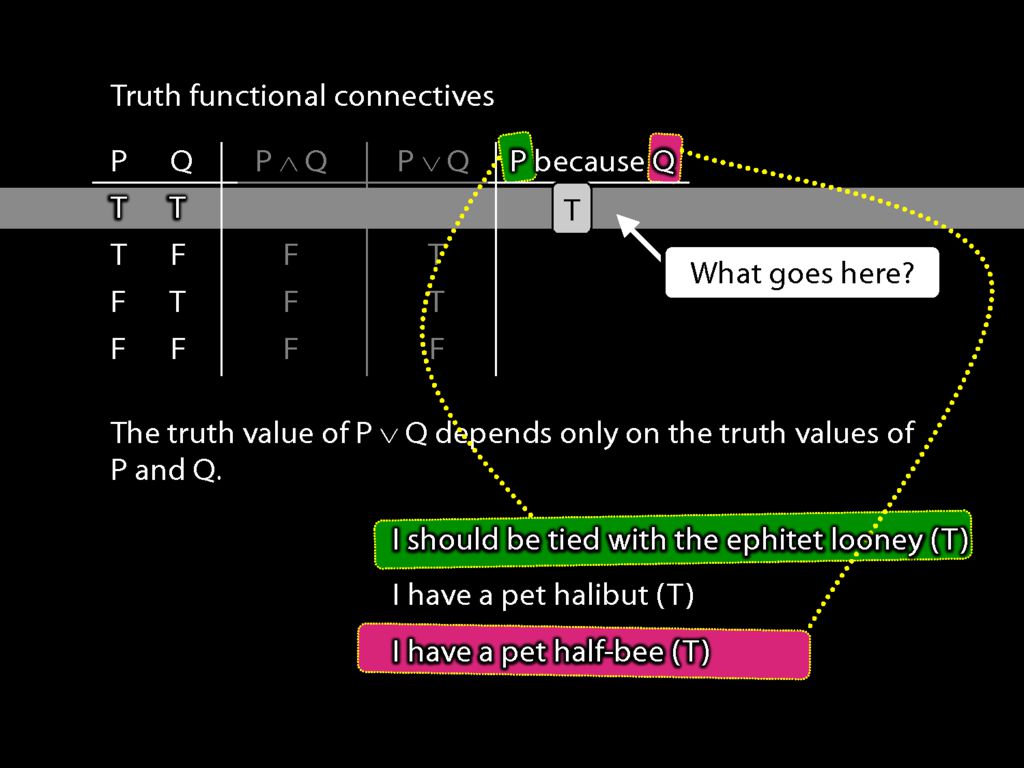
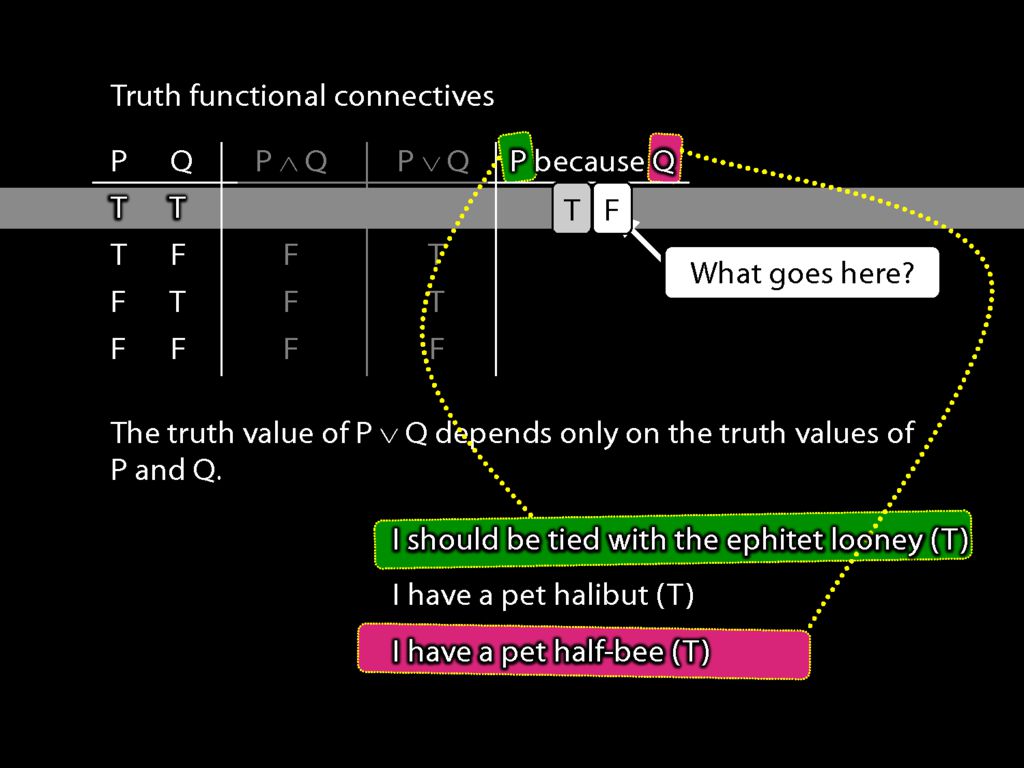
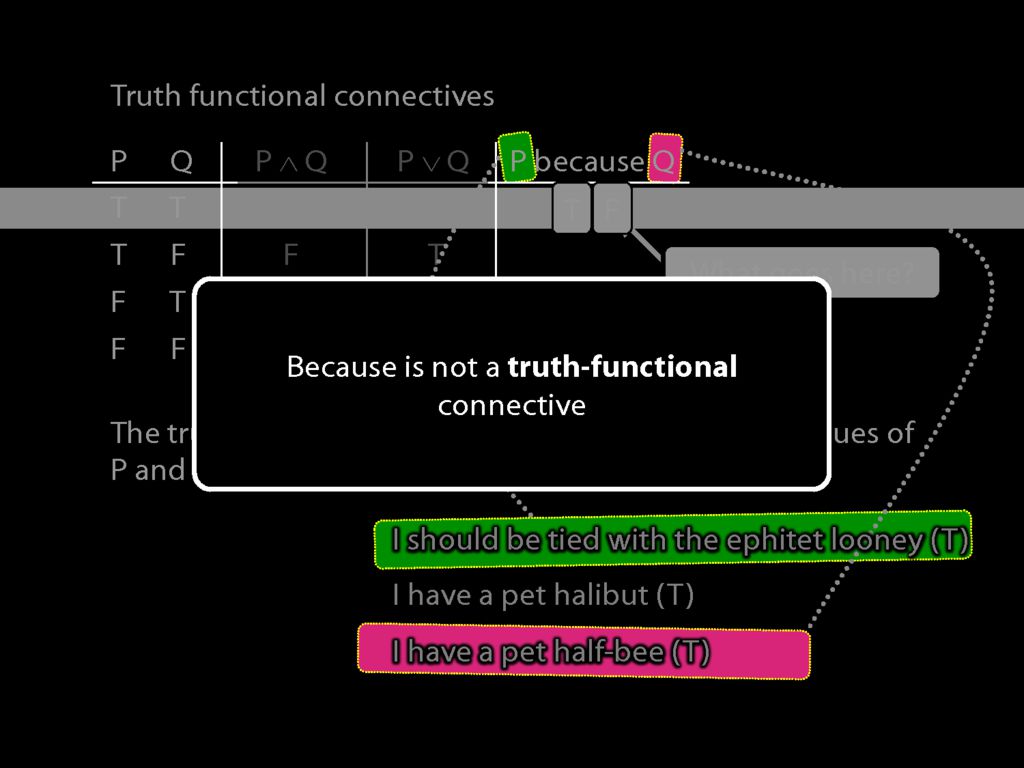
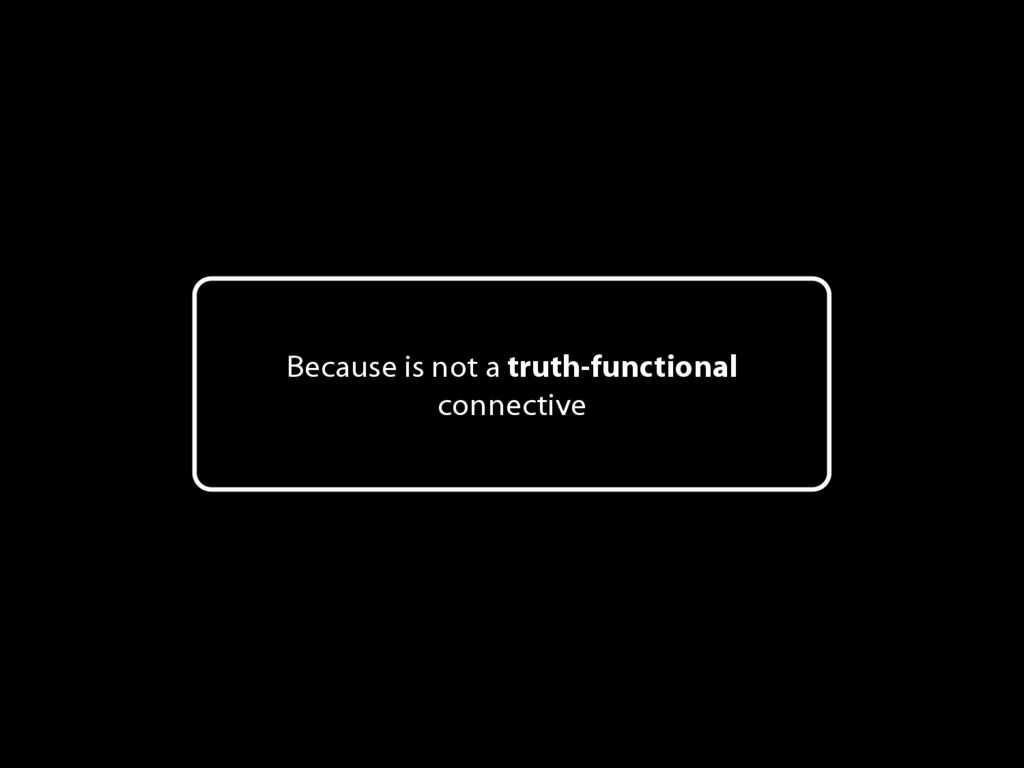
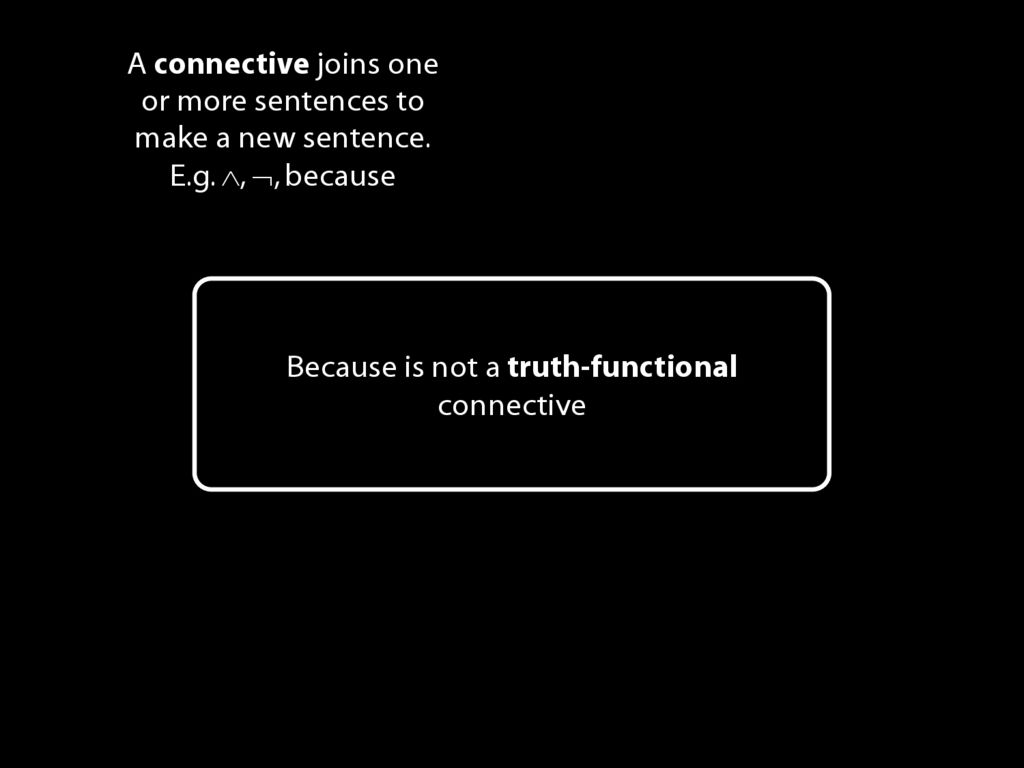
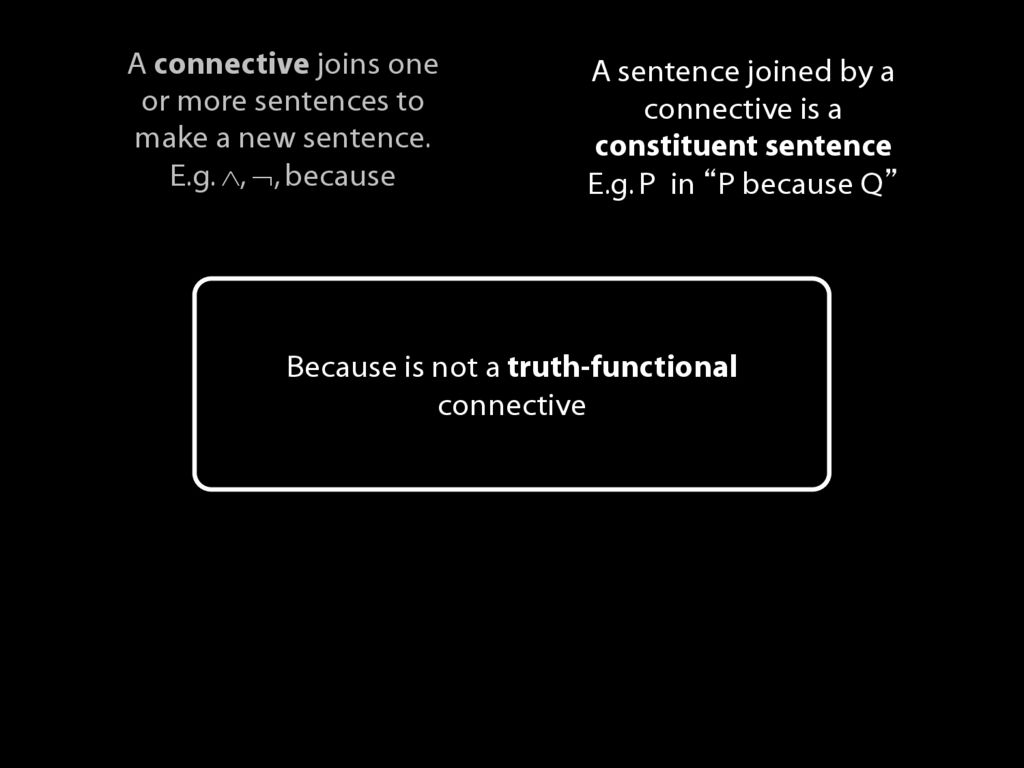
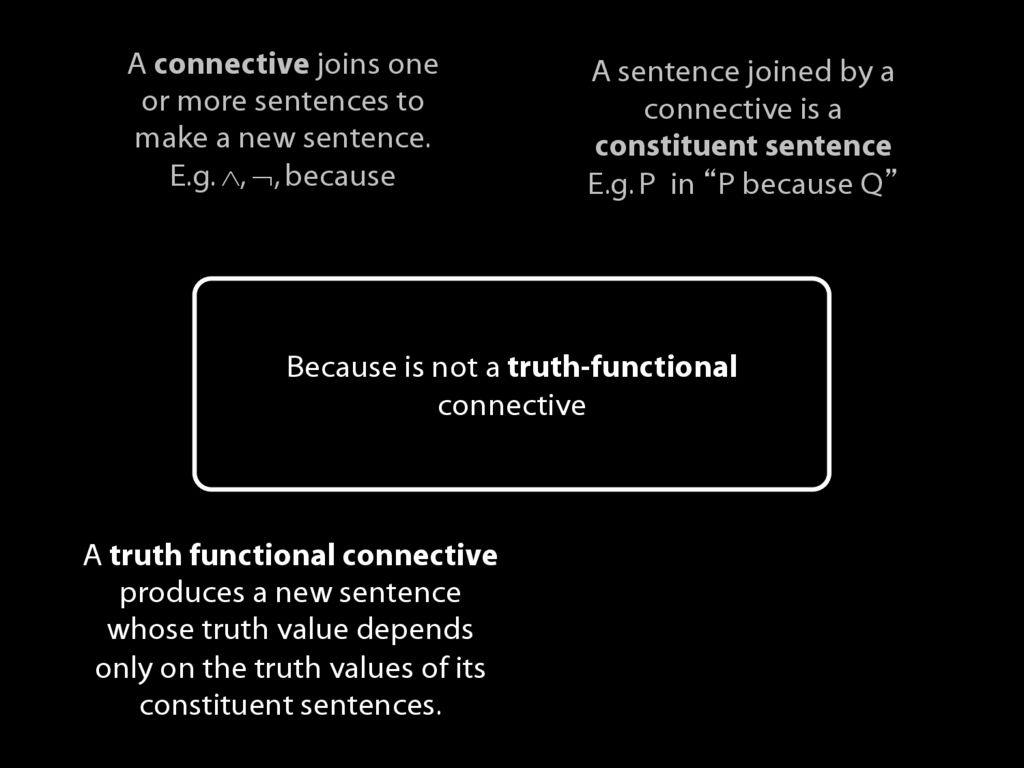

7.9
7.9